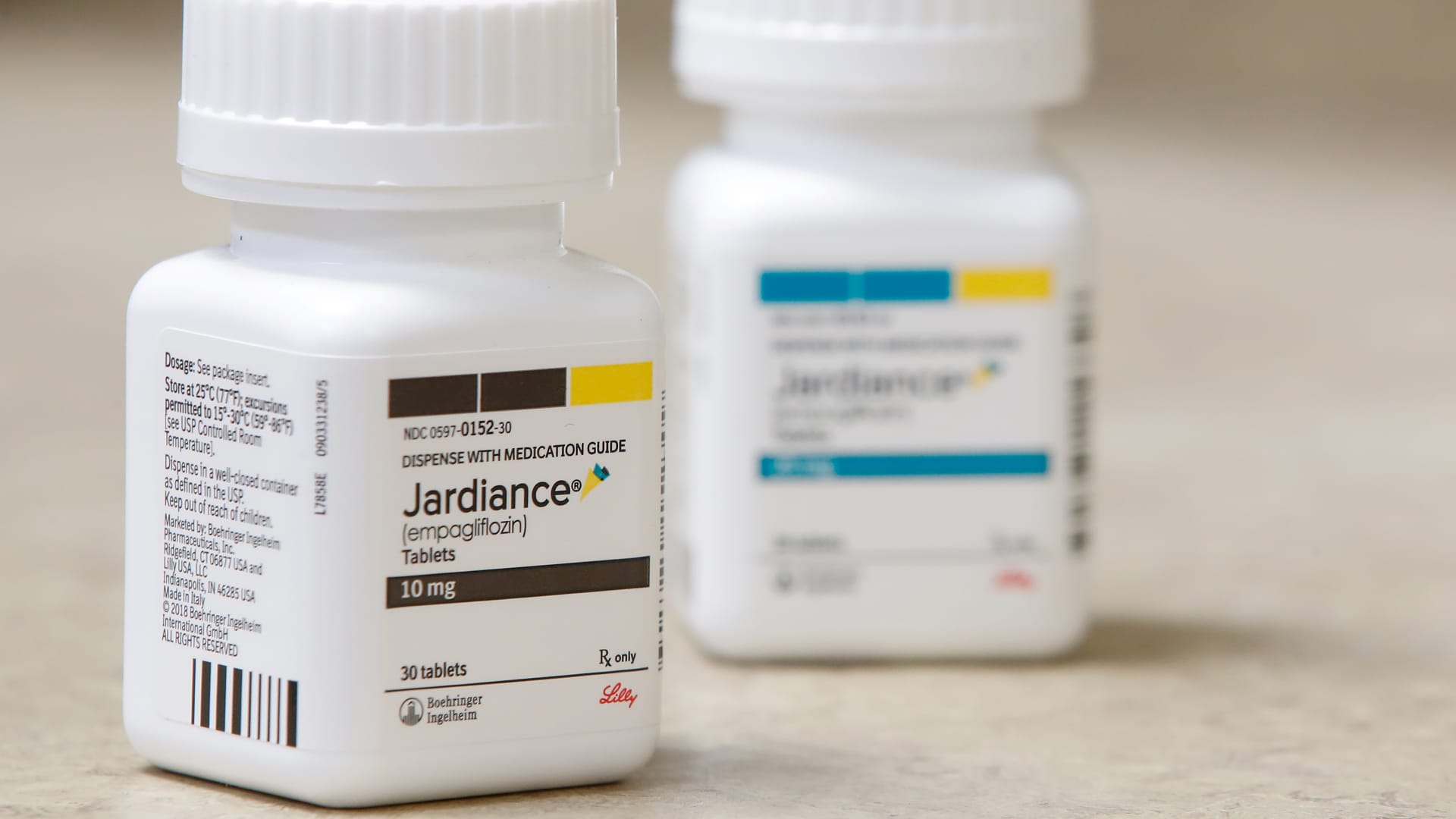Bottles of the drug Jardiance, made by Eli Lilly and Company, sit on a counter at a pharmacy in Provo, Utah, January 9, 2020.
George Frey | Reuters
Two blood thinners and a diabetes medication are the most widely used among a list of ten drugs that will be subject to price negotiations between manufacturers and Medicare.
The Biden administration unveiled the much-awaited list on Tuesday, kicking off a process that aims to lower drug costs for older adults in the U.S. The list specifically names drugs with the highest spending for Medicare Part D, which covers prescription medications, for the period from June 1, 2022, to May 31, 2023.
Bristol-Myers Squibb‘s blood thinner Eliquis was the most widely used during the time period, with 3.7 million Medicare enrollees, according to a fact sheet from the Centers for Medicare and Medicaid Services, or CMS.
Eliquis, co-developed by Pfizer, is used to prevent blood clotting and reduce the risk of stroke.
The second most used drug was Boehringer Ingelheim’s Jardiance, which lowers blood sugar for people with Type 2 diabetes. Nearly 1.6 million Medicare enrollees used Jardiance during the same time period, according to the fact sheet.
Johnson & Johnson’s own blood thinner Xarelto was third, as about 1.3 million beneficiaries used the medication from June 2022 to May 2023.
Medicare Part D also spent more on those three drugs during the time period than it did on the seven other medicines on the list. The plan spent $16.5 billion on Eliquis, roughly $7 billion on Jardiance and $6 billion on Xarelto, according to CMS.
In total, the 10 medicines accounted for $50.5 billion, or about 20%, of total Part D prescription drug costs from June 2022 to May 2023, CMS said.
Around 50.5 million patients are currently enrolled in Part D plans, according to health policy research organization KFF. More than 8.2 million use the 10 drugs on the list.
Drugmakers have to sign agreements to join the negotiations by Oct. 1. CMS will then make an initial price offer to manufacturers in February 2024, and those companies have a month to accept or make a counteroffer.
The negotiations will end in August 2024, with agreed-upon prices published on Sept. 1, 2024. The reduced prices won’t go into effect until January 2026.

